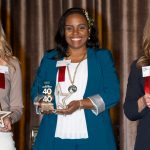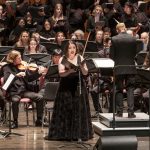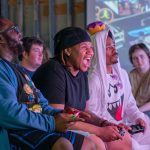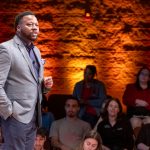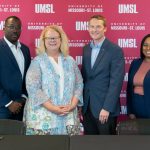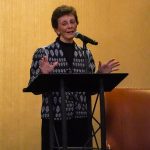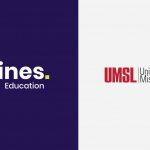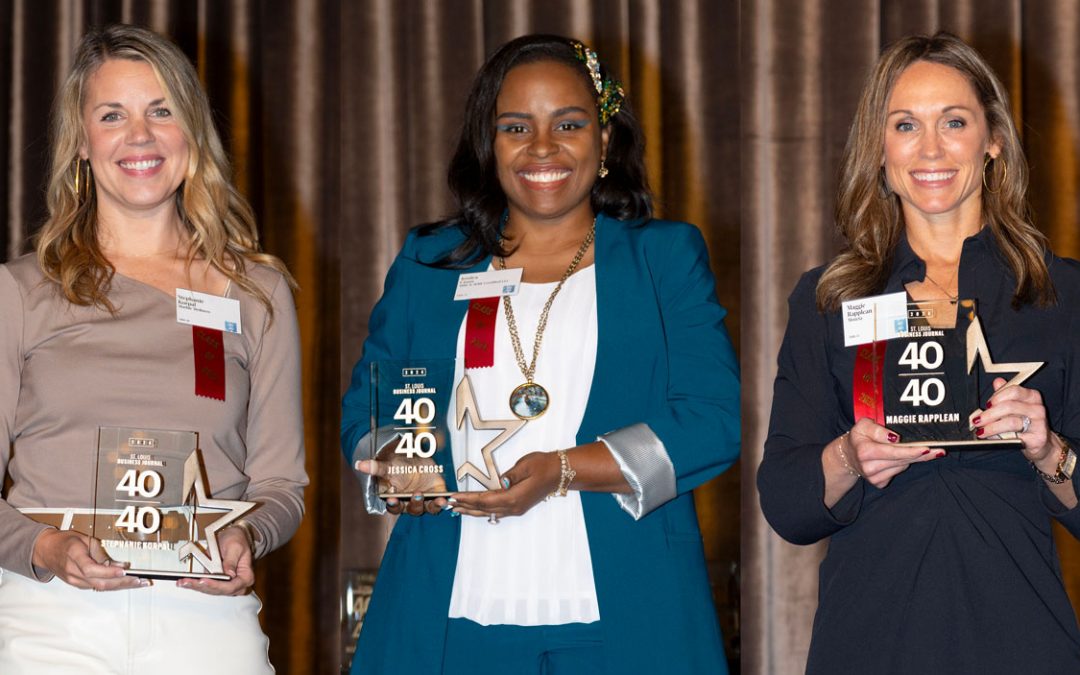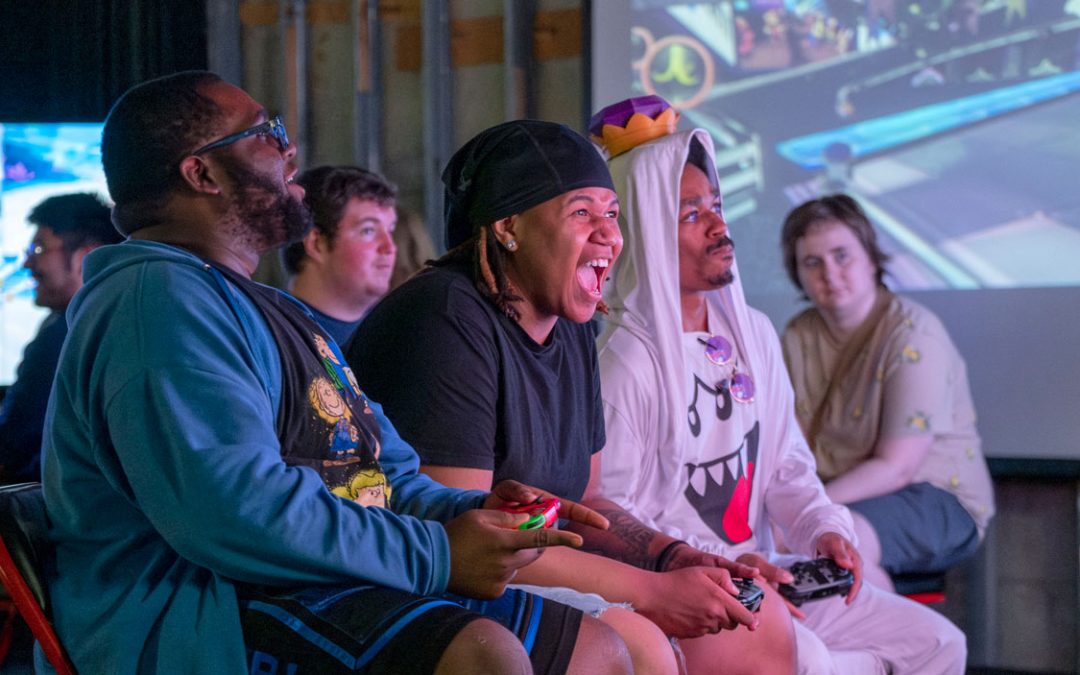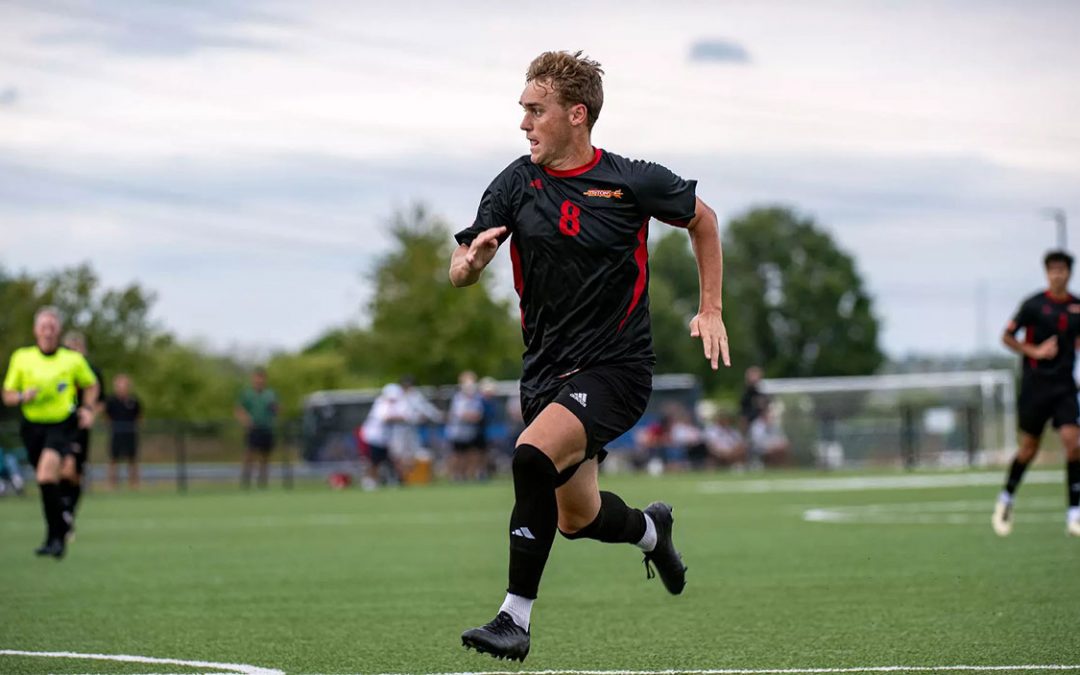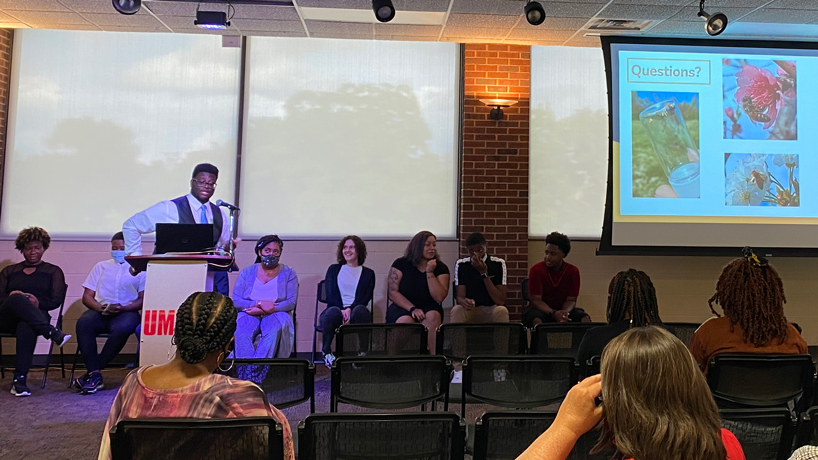
Jennings Senior High School graduate Gregory Wilson responds to a question from the audience during the closing event for the Collaborative Laboratory Internship and Mentoring Blueprint program last Friday at the J.C. Penney Conference Center’s Summit Lounge. Wilson, who will be attending UMSL this fall, was one of 10 students who took part in the program this year, and they spent the spring and summer researching urban bee pollination. (Photo by Steve Walentik)
Students and aspiring scientists from four area high schools began a project this spring to study urban bee pollination through the Collaborative Laboratory Internship and Mentoring Blueprint program at the University of Missouri–St. Louis.
The 10 students from Jennings, Ritenour, Riverview Gardens and University City high schools completed paid internships in which they conducted field work at community gardens in Florissant, Missouri, and midtown St. Louis as trees and other plants were only starting to bloom beginning in April and continuing into the summer.
“They got to learn about pollination biology, why it’s important and how it happens,” said Patricia Parker, the E. Desmond Lee Endowed Professor in Zoological Studies in UMSL’s Department of Biology. “In the process, they were exposed to the diversity of bees that are in our area, as well as the diversity of plants and how to identify all of the above.”
The students – Taviah Crume, Devin Elkins, Nina Ely, Anya Johnson, Kayla Williams and Gregory Wilson from Jennings, Elizabeth Caloch from Ritenour, Javant Watson from Riverview Gardens, Emma Al Samaraiy from University City and Dakota Warren, a Jennings graduate who recently completed her freshman year at UMSL – had a chance to share all that they learned last Friday evening during a closing presentation attended by friends, family and other supporters of the program in the J.C. Penney Conference Center’s Summit Lounge.
They began by sharing background about bees, flowers and the process of pollination, and they described the differences they observed in the two gardens, including the various types of bees and plants they encountered in each.
They also described how they went about capturing the bees and collecting and analyzing samples of the pollen found on them before releasing them back into the wild.
“The data we collected was examined in the lab, and we discovered over 30 types of pollen from all the bees and from the samples that we collected,” said Caloch, entering her senior year at Ritenour.
Along the way, they gained a much better understanding of bees, why they’re not to be feared and the important role they play in the ecosystem.
The opportunity to conduct research both in the field and in the laboratory has been a central part of the CLIMB program since Parker created it in partnership with colleagues at Jennings in 2015.
It was not something CLIMB was able to deliver to last year’s class of interns because of the COVID-19 pandemic. Instead, the 14 students who participated in the program worked together virtually to study the pandemic itself and the outsized impact it had on communities of color.
Though it was a worthwhile educational endeavor, it was not the same as the in-person learning experience students were able to gain in previous years while working on campus in academic research laboratories in biology, chemistry, physics and psychology as well as occasionally in other areas such as computer science, communication music and education.
“We felt that we had not fulfilled our commitment to those 2020 interns,” Parker said during Friday’s event.
But she was glad to note that some of those 2020 interns were back this year, and CLIMB provided the hands-on scientific experience it could not a year ago.
Hugh Key, a 2020 graduate of the University of Missouri–Columbia in fisheries and wildlife, served as the program’s coordinator throughout the spring and summer and guided the students’ work.
“They had fun doing it and they learned, and that’s the really most important thing,” Key said. “That’s considered success in my book.”
The depth of the knowledge the students gained was most visible in Friday’s presentation as they deftly fielded questions from the audience after their prepared remarks.
One of the last questions came from Parker, who noted that scientists often use an inaugural field season to test how well things might work. She was curious to hear from the students what ideas they had for future inquiry, and Ely was quick with a response.
“I would want us to go deeper into how the bees work with each other,” she said. “Maybe we could do something with beekeepers, who have their own little hives, and see how the bees work with each other. I think that would be a cool thing to do. Since we already know how they get the pollen and everything, seeing how they work within the colonies would be a good experience.”
To reinforce the value Ely placed on her experience this spring and summer, she told Parker: “If you let me back here again, I would definitely do it again.”


